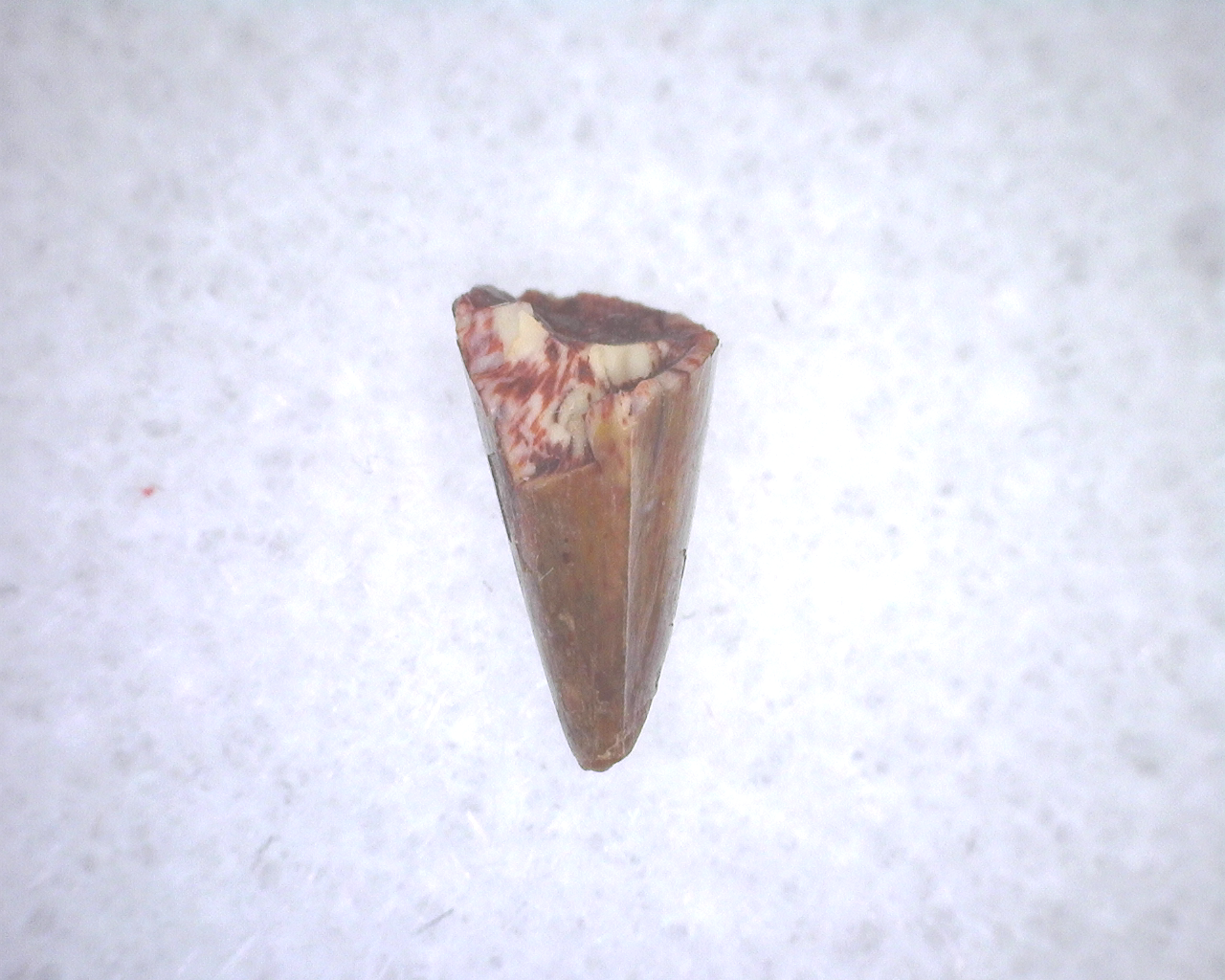Description
- Eryops megacephalus Amphibian Tooth
- Permian Age
- Ryan Formation
- Jefferson County, Oklahoma
- Specimen measures approx. 7/32″ long and will come in a 1.25″ Gem Jar
Eryops meaning “drawn-out face” because most of its skull was in front of its eyes is a genus of extinct, semi-aquatic temnospondyl amphibian found primarily in the Lower Permian-aged Admiral Formation (about 295 million years ago) of Archer County, Texas, but fossils are also found in New Mexico and parts of the eastern United States. Eryops also occurs in older Pennsylvanian strata of the Conemaugh Group in West Virginia Eryops averaged a little over 1.5-2.0 meters (5–6.5 ft) long, making it one of the largest land animals of its time. It weighed about 90 kilograms (200 lb). It probably had few predators, although it would have likely been preyed upon by Dimetrodon, which was larger and was the apex predator at the time. Several complete skeletons of Eryops have been found in the Lower Permian, but skull bones and teeth are the most common fossils. Eryops was better adapted to a terrestrial environment than its ancestors. Sturdy limbs and a strong spine supported the body while out of water.






